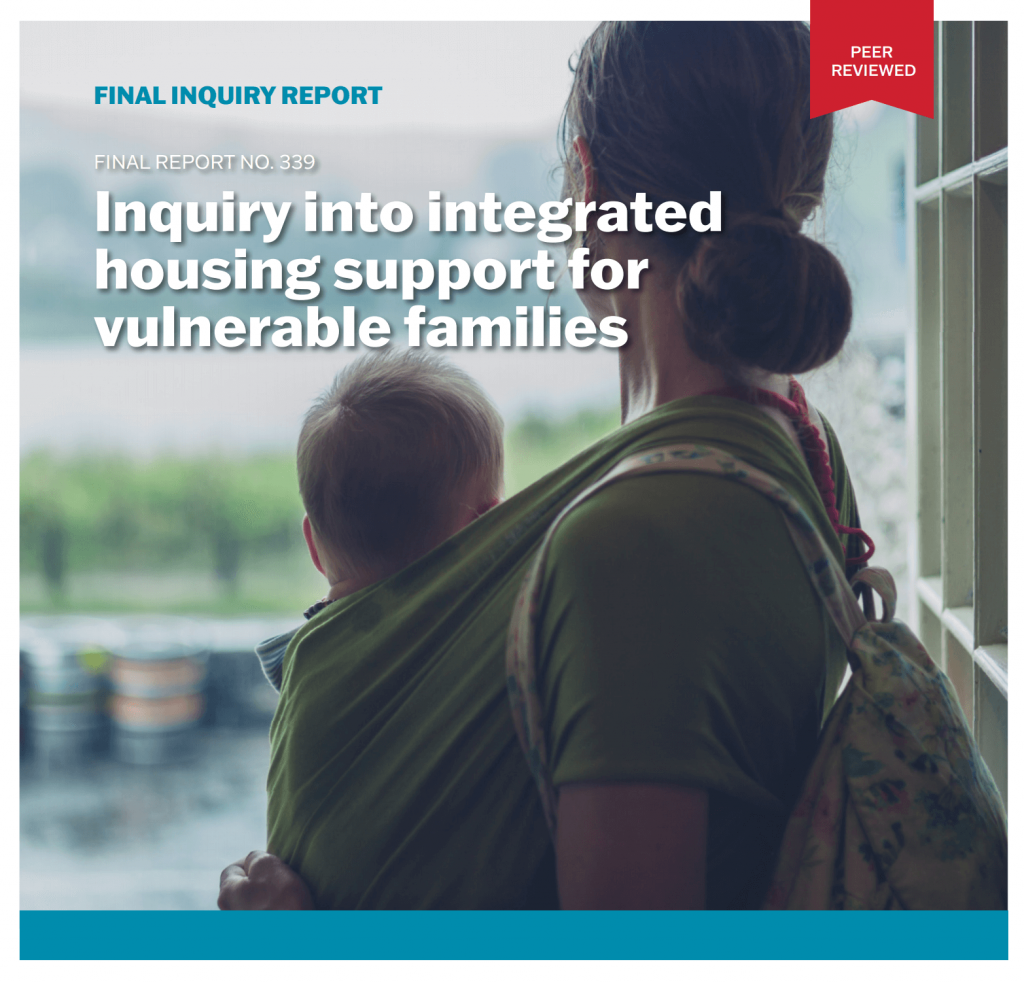
By kylie valentine, Kyllie Cripps, Kathleen Flanagan, Daphne Habibis, Chris Martin and Hazel Blunden. This is an edited extract from the executive summary of the AHURI Inquiry Report. Read the executive summary, the full report and the policy evidence summary here.
Domestic and family violence (DFV), mental illness and problematic alcohol and other drug use are significant risk factors for homelessness. A range of policy responses has been devised to prevent homelessness among those affected by these issues, and to provide support to those who are experiencing homelessness. Evidence is emerging of promising practices that could be expanded. However, there are also indications of existing practices and policies in the housing field that may impede effective responses or worsen the hardships and injustice faced by vulnerable groups.
Vulnerability to homelessness and violence are produced by multiple causes, and integrated responses to address this vulnerability have been identified in a number of strategies and policies as a priority. This Inquiry investigated how policy and program responses are experienced by key population groups in different types of housing tenure. The research focused on how integration is actually operating in different contexts:
- the integration of housing and other support for women experiencing DFV in different housing tenure
- integrated support for Indigenous women experiencing DFV
- the integration of social housing policy with policies to support women affected by domestic and family
- violence and other especially vulnerable households.
Key findings
The housing and other needs of vulnerable families cannot be met by one sector. This is increasingly recognised in policy and program design. The National Plan to Reduce Violence against Women and their Children, for example, recognises that ‘all systems need to work together’ and aspires to ‘an unprecedented level of collaboration with the broader community and governments’ (Council of Australian Governments 2010: 11).
However, there are gaps in provision to vulnerable families across the housing system, and a need for improved responses in emergency accommodation, social housing, and private rental housing. The interactions between housing and human services, particularly child protection and family support, also work against policy aspirations to improve support for vulnerable families and reduce the risks of homelessness and other adverse events. While areas of strength and effective service delivery are evident, these are not uniformly available to all groups and in all areas.
Refuges, shelters and transitional accommodation remain a vital, albeit necessarily specialised and limited, part of the service system and provide valuable support for many families. However, the lack of secure, affordable and permanent housing is a systemic issue.
Indigenous women and children, especially in regional and remote areas, have very limited housing options and housing pathways in the aftermath of DFV. Acute shortages in crisis, transitional and long-term accommodation mean that Indigenous women and children are routinely turned away from refuges and safe houses because they are at capacity. In these circumstances they become trapped in a revolving door seeking shelter with family/friends or returning to an unsafe home. This is the case even in the context of a significant growth in awareness and resources to respond to families who have experienced DFV. The capacity of the service system away from metropolitan areas, and the cultural safety of services, remain areas where policy development, and resources to build workforce capacity and service quality are needed.
Social housing continues to be an important destination tenure for women leaving DFV. While it does not always offer an ideal living environment for women dealing with trauma or safety concerns, it does provide secure tenure and ongoing affordability. The marginalisation of social housing, through years of underinvestment, means not only is there insufficient housing for all who need it, but the little there is often comes in concentrations of disadvantage, and subject to sharply judgemental conditionality. Social housing legal responses to crime and to non-criminal anti-social behaviour conflict with other policies and practices to support vulnerable families in sustaining their tenancies. Although social housing landlords are generally strongly committed to assisting women leaving DFV, in social housing women are subject to unrealistic expectations about controlling the misconduct of male partners and visitors—and may be evicted because of violence against them. Tenancy termination is a blunt, heavy instrument that especially impacts on women, children, Indigenous persons and persons with problematic alcohol and other drug use.

No Comments so far ↓
There are no comments yet...Kick things off by filling out the form below.